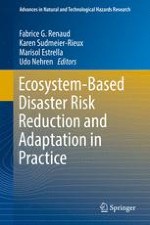This book is a compilation of recent developments in the field of ecosystem-based disaster risk reduction and climate change adaption (Eco-DRR/CCA) globally. It provides further evidence that ecosystem-based approaches make economic sense, and showcases how research has progressively filled knowledge gaps about translating this concept into practice. It presents a number of methods, and tools that illustrate how Eco-DRR/CCA has been applied for various ecosystems and hazard contexts around the world. It also discusses how innovative institutional arrangements and policies are shaping the field of Eco-DRR/CCA. The book is of relevance to scientists, practitioners, policy-makers and students in the field of ecosystem management for disaster risk reduction and climate change adaptation.
